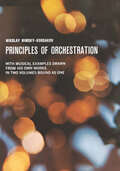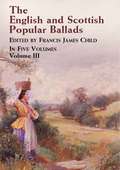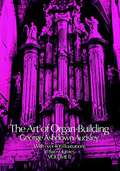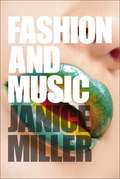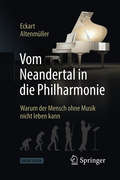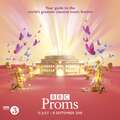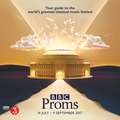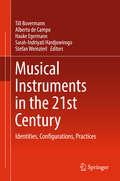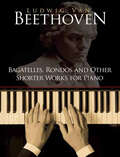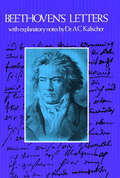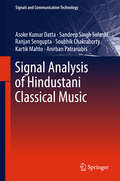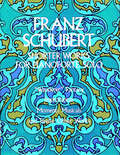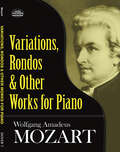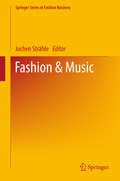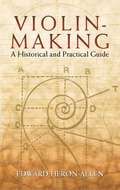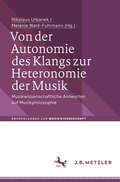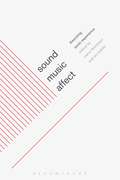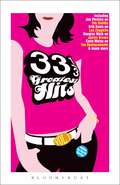- Table View
- List View
Principles of Orchestration
by Nikolai Rimsky-Korsakov"To orchestrate is to create, and this cannot be taught," wrote Nikolay Rimsky-Korsakov, the great Russian composer whose genius for brilliant, highly colored orchestration is unsurpassed. But invention, in all art, is closely allied to technique, and technique can be taught. This book, therefore, which differs from most other texts on the subject because of its tremendous wealth of musical examples and its systematic arrangement of material according to each constituent of the orchestra, will undoubtedly be of value to any music student. It is a music classic, perhaps the only book on classical orchestration written by a major composer.In it, the composer aims to provide the reader with the fundamental principles of modern orchestration from the standpoint of brilliance and imagination, and he devotes considerable space to the study of tonal resonance and orchestral combination. In his course, he demonstrates such things as how to produce a good-sounding chord of certain tone-quality, uniformly distributed; how to detach a melody from its harmonic setting; correct progression of parts; and other similar problems.The first chapter is a general review of orchestral groups, with an instrument-by-instrument breakdown and material on such technical questions as fingering, range, emission of sound, etc. There follows two chapters on melody and harmony in strings, winds, brasses, and combined groups. Chapter IV, Composition of the Orchestra, covers different ways of orchestrating the same music; effects that can be achieved with full tutti; tutti in winds, tutti pizzicato, soli in the strings, etc.; chords; progressions; and so on. The last two chapters deal with opera and include discussion of solo and choral accompaniment, instruments on stage or in the wings, technical terms, soloists (range, register, vocalization, vowels, etc.), voices in combination, and choral singing. Immediately following this text are some 330 pages of musical examples drawn from "Sheherazade," the "Antar Symphony," "Capriccio Espagnol," "Sadko," "Ivan the Terrible," "Le Coq d'Or," "Mlada," "The Tsar's Bride," and others of Rimsky-Korsakov's works. These excerpts are all referred to in the text itself, where they illustrate, far better than words, particular points of theory and actual musical practice. They are largely responsible for making this book the very special (and very useful) publication it is.This single-volume edition also includes a brief preface by the editor and extracts from Rimsky-Korsakov's 1891 draft and final versions of his own preface, as well as an appendixed chart of single tutti chords in the composer's works.
The English and Scottish Popular Ballads, Volume 3
by Francis James ChildPublished between 1882 and 1898, this definitive collection compiles all the extant ballads with all known variants and features Child's commentary for each work. Volume III includes Parts V and VI of the original set — ballads 114–188: "Mary Hamilton," "Flodden Field," "Sir Andrew Barton," and more than 30 ballads about Robin Hood.
The English and Scottish Popular Ballads, Volume 4
by Francis James ChildPublished between 1882 and 1898, this definitive collection compiles all the extant ballads with all known variants and features Child's commentary for each work. Volume IV includes Parts VII and VIII of the original set — ballads 189-265: including "Rob Roy," "Sir James the Rose," "Geordie," "The Gypsy Laddie," "The New-Slain Knight," more.
The English and Scottish Popular Ballads, Volume 5
by Francis James ChildPublished between 1882 and 1898, this definitive collection compiles all the extant ballads with all known variants and features Child's commentary for each work. Volume 5 includes Parts IX and X of the original set — ballads 266-305 — plus a 3000-item bibliography, indexes, glossary, musical selections and an essay by Walter Morris Hart.
The Art of Organ Building (Dover Books on Music #2)
by George Ashdown AudsleyVolume 2 of the fullest repository on organ building and history in English language. Includes outline of organ history, external design and decoration, internal arrangement and mechanical systems, acoustics and theories of sound-production in organ pipes, tonal structure and appointment, compound stops of the organ, more. Complete with illustrations, tables, and specifications. "...the most significant republication in our field for the past twenty years...an incomparable, invaluable book." — American Guild of Organists Quarterly.
Enigma Variations and Pomp and Circumstance Marches in Full Score
by Edward ElgarAuthoritative British editions of the 14 Variations, rich with melody and vibrant rhythms, each revealing a facet of a central theme never fully expressed and each depicting an unnamed friend of the composer. Four of the 5 stirring Pomp and Circumstance Marches are included here as well. Filled with a distinctively English grandeur, they are popular everywhere and have been frequently recorded.
Fashion and Music
by Janice MillerThe relationship between popular music and fashion has been a culturally significant one since the 1950s, and this book explores how music and musicians play a key role in the shaping of identity, taste and consumption. Using a range of historical and contemporary examples, this book uncovers the way in which fashion and music have worked to shape contemporary attitudes to bodies and identities.Focusing on performers as much as fans, on the mainstream as much as the underground, Fashion and Music provides a lens through which to examine themes of gender, sexuality, ageing and youth, ethnicity, body image, consumer culture, fandom and postmodernity.
Vom Neandertal in die Philharmonie: Warum der Mensch ohne Musik nicht leben kann
by Eckart AltenmüllerWarum haben wir Menschen Musik? Wie entfaltet Musik ihre Wirkung? Was geht dabei in unserem Gehirn vor? Fördert Musik die Intelligenz? Dient sie dem Gruppenzusammenhalt? Teilt Musik Emotionen mit? Dieses Buch erklärt die zahlreichen Wirkungen von Musik auf Fühlen und Denken, auf die Organisation von Gruppen sowie auf unsere körperliche und geistige Gesundheit. Im ersten Teil des Werkes werden die evolutionären Grundlagen der Musikwahrnehmung und des Musizierens dargestellt. Die faszinierenden neuen Erkenntnisse zu den positiven, aber auch den negativen Auswirkungen intensiven Musizierens auf das Nervensystem werden in den folgenden Kapiteln geschildert. Glücklicherweise macht Musik nur selten krank – viel wichtiger sind die bislang noch gar nicht ausgeschöpften heilenden Potenziale und die große Macht der positiven Emotionen, die durch Musik ausgelöst werden. Mit diesen erfreulichen und zukunftsweisenden Aspekten schließt das Buch, das jeden ansprechen wird, der eine Liebe zur Musik empfindet, sei es als Musizierender oder als Hörer.
BBC Proms 2018: Festival Guide (BBC Proms Guides)
by Bloomsbury PublishingThe BBC Proms is the world's biggest and longest running classical music festival and one of the jewels in the crown for the BBC. It is one of the strongest brand names in the music world and attracts a glittering array of artists and orchestras from the UK and around the world in over 150 concerts, talks, workshops and family events around London every summer. Whether you're a first time visitor or an experienced Prommer, watching at home or listening on radio or online, the BBC Proms Guide will help you to plan your summer of music and discover in depth what lies behind the Proms – from the composers to the performers to how the events are broadcast. The Proms Guide contains brand new articles on featured composers and insights on performers, new music and accompanying events.
BBC Proms 2017: Festival Guide (BBC Proms Guides)
by Bloomsbury PublishingThe BBC Proms is the world's biggest and longest-running classical music festival and one of the jewels in the crown for the BBC. It is one of the strongest brand names in the music world and attracts a glittering array of artists and orchestras from the UK and around the world in over 150 concerts, talks, workshops and family events around London every summer. Whether you're a first-time visitor or an experienced Prommer, watching at home or listening on radio or online, the BBC Proms Guide will help you to plan your summer of music and discover in depth what lies behind the Proms – from the composers to the performers to how the events are broadcast. The Proms Guide contains brand-new articles on featured composers and insights on performers, new music and accompanying events.
The Fundamentals of Sonic Art & Sound Design (Fundamentals)
by Tony GibbsThis book introduces a subject that will be new to many: sonic arts. The application of sound to other media (such as film or video) is well known and the idea of sound as a medium in its own right (such as radio) is also widely accepted. However, the idea that sound could also be a distinct art form by itself is less well established and often misunderstood. The Fundamentals of Sonic Art & Sound Design introduces, describes and begins the process of defining this new subject and to provide a starting point for anyone who has an interest in the creative uses of sound.The book explores the worlds of sonic art and sound design through their history and development, and looks at the present state of these extraordinarily diverse genres through the works and words of established artists and through an examination of the wide range of practices that currently come under the heading of sonic arts. The technologies that are used and the impact that they have upon the work are also discussed.Additionally, The Fundamentals of Sonic Art & Sound Design considers new and radical approaches to sound recording, performance, installation works and exhibitions and visits the worlds of the sonic artist and the sound designer.
Musical Instruments in the 21st Century: Identities, Configurations, Practices
by Till Bovermann Alberto De Campo Hauke Egermann Sarah-Indriyati Hardjowirogo Stefan WeinzierlBy exploring the many different types and forms of contemporary musical instruments, this book contributes to a better understanding of the conditions of instrumentality in the 21st century. Providing insights from science, humanities and the arts, authors from a wide range of disciplines discuss the following questions: · What are the conditions under which an object is recognized as a musical instrument? · What are the actions and procedures typically associated with musical instruments? · What kind of (mental and physical) knowledge do we access in order to recognize or use something as a musical instrument? · How is this knowledge being shaped by cultural conventions and temporal conditions? · How do algorithmic processes 'change the game' of musical performance, and as a result, how do they affect notions of instrumentality? · How do we address the question of instrumental identity within an instrument's design process? · What properties can be used to differentiate successful and unsuccessful instruments? Do these properties also contribute to the instrumentality of an object in general? What does success mean within an artistic, commercial, technological, or scientific context?
Bagatelles, Rondos and Other Shorter Works for Piano
by Ludwig Van BeethovenUniversally recognized for his critically important role in raising instrumental music to its highest plane, Beethoven is also highly regarded for his leadership in developing and extending the piano repertoire. His bagatelles, once described by the composer himself as "Kleinigkeiten" -- or "trifles" -- are short, masterful works that have proved tremendously popular not only for their pleasing sounds but also for the technical challenges they offer intermediate as well as advanced piano students.This superb, high-quality collection, reproduced from the authoritative Breitkopf & Härtel edition, contains the composer's most popular and most performed bagatelles, rondos, and shorter compositions, including: Six Minuets (c. 1795); the Polonaise in C, Op. 89 (1814); Six Bagatelles, Op. 126 (1823-24); the famed Rondo a capriccio in G (Rage Over a Lost Penny, 1795); the Andante in F (Andante favori, 1803), and a generous selection of other short works. An easily affordable volume, the present edition provides Beethoven devotees, students, teachers, and music lovers with a delightful sampling of a number of spirited works by one of the music world's supreme masters.
Beethoven's Letters
by Ludwig Van BeethovenLudwig van Beethoven (1770-1827), the protagonist of freedom for music, disentangled music from the control of the ruling class. In publishing his music and writing for the rising classes, Beethoven claimed freedom and expressed the emotions of the new rulers, the artists. The Eroica, Fidelio, and the piano works express the emotions of the new rulers -- the intense love, the need for companionship of people, the forces that conspired to defeat the artist, and the strength and superiority of the artist in overcoming the weaknesses. The letters of Beethoven are the principal nonmusical expression of his personality in its relationship with the world of his time.In what he called the "dry letters of the alphabet," Beethoven depicted his fears, his loves, and his friendly relations: his fears of deafness and of corrupted texts by pirating printers; his loves, Bettina Brentano and Giulietta Guicciardi; and his friendly relations with Baron Zmeskall, Frau Nannette Streicher, and the music publishers Steiner and Company. He praises the poetry of Goethe and Schiller but condemns Goethe for his obeisance toward royalty. He solicits help during his perpetual trouble with his health and with his servants. He castigates publishers, sets prices for his works, and calculates letters of dedication. He expresses his love for his nephew, Carl, but documents the trouble that Carl was causing him by taking up his precious time. And although Beethoven liked to decorate the letters with musical openings and closings and an occasional song to the receiver, he increasingly signed his letters, "In haste."The 457 letters collected here are the most important of the letters of the spirit that was to shape and move a century. Explanatory notes comment upon works, on persons mentioned, and on the puns of which Beethoven was fond. The letters chronicle his business, his needs, his humor and bitterness, and his philosophy. They will give many insights into Beethoven's methods, his influences, his moods, and the conditions under which the master worked.
Signal Analysis of Hindustani Classical Music (Signals and Communication Technology)
by Asoke Kumar Datta Sandeep Singh Solanki Ranjan Sengupta Soubhik Chakraborty Kartik Mahto Anirban PatranabisThis book presents a comprehensive overview of the basics of Hindustani music and the associated signal analysis and technological developments. It begins with an in-depth introduction to musical signal analysis and its current applications, and then moves on to a detailed discussion of the features involved in understanding the musical meaning of the signal in the context of Hindustani music. The components consist of tones, shruti, scales, pitch duration and stability, raga, gharana and musical instruments. The book covers the various technological developments in this field, supplemented with a number of case studies and their analysis. The book offers new music researchers essential insights into the use the automatic concept for finding and testing the musical features for their applications. Intended primarily for postgraduate and PhD students working in the area of scientific research on Hindustani music, as well as other genres where the concepts are applicable, it is also a valuable resource for professionals and researchers in musical signal processing.
Shorter Works for Pianoforte Solo
by Franz SchubertSupplementing the Dover edition of Schubert's complete piano sonatas, this volume contains all of the remainder of Schubert's music for pianoforte solo (except the dances and a few unfinished pieces): the ever popular "Wanderer" fantasy, Opus 15; the 8 impromptus (Opp. 90 and 142), experimental forerunners of one of the typical genres of the later Romantic composers; the Moments Musicals, Opus 94; the Adagio and Rondo, Opus 145; and numerous variations, scherzos, and other short pieces.The music is photographically reprinted from the Breitkopf & Härtel Schubert-Gesammtausgabe, still considered the standard, authoritative edition of Schubert's music.Note heads in this edition have been reproduced in a size large enough to be read easily at the keyboard, and margins and spaces between staves are conveniently wide to permit written notes, harmonic analysis, fingerings, and running measure numbers. Essential to all classical pianists, this edition is also practical for study, reference, enjoyment -- virtually any use.
Variations, Rondos and Other Works for Piano
by Wolfgang Amadeus MozartThe elegance, grace, and clarity of Mozart's piano music has charmed generations of music lovers. Now 37 of the composer's delightful piano pieces have been collected in this attractive volume, reproduced from the authoritative Breitkopf & Härtel edition. Among the selections are:Variations on "Mio caro Andone" by Salieri, K.180/173cVariations on "Je suis Lindor" by Baudron, K. 354/299aVariations on "Ah vous dirai-je, maman," K. 265/300eVariations on "La belle françoise," K.353/300fVariations on "Salve tu, Domine" by Paisiello, K. 398/416eVariations on "Unser dummer Pöbel meint" by Gluck, K.455 Variations on a Minuet by Duport, K.573Rondo in D Major, K.485Rondo in A Minor, K.511Minuet in G Major, K.1/1eMinuet in F Major, K.2Minuet in D Major, K.355/576bAllegro in B-flat Major, K.3Allegro in B-flat Major, K.400/372aAllegro in G Minor, K.312/590dFugue in G Minor, K.401/3753Fugue in E-flat Major, K.153/375fFugue in G Minor, K.154/385kCapriccio in C Major, K.395/300gAllegro and Andante, K.533Adagio in B Minor, K.540Gigue in G Major, K.574... and more.
Fashion & Music (Springer Series in Fashion Business)
by Jochen SträhleThis book will broaden readers’ understanding of the links between the music and fashion industries. It highlights the challenges currently facing the fashion industry in terms of hyper-competition, definition of ever-faster trends, changing consumer demands etc. In fact, the fashion industry is heavily influenced by the digital revolution in the music industry, which has changed the face of individual music consumption and social reference, and therefore, also has impacts on fashion consumption and social reference. This understanding is crucial in order to realign any fashion company’s strategies to the demands of modern fashion consumers. In terms of content, the book first discusses the social perspective of fashion and music. This includes an analysis of music as a key influencer of fashion trends, both theoretically and on the basis of a case study on grunge music. Then the role of music in the fashion business is addressed, and covers in-store music and the role of music in fashion communication. Following up, the role of fashion in the music business is analyzed. This includes the trend of co-design of fashion collections, music artists’ role of differentiation by style, and the market for music fashion merchandise articles (both theoretically and drawing on a case study). In closing, potential lessons learned from the music industry are developed for the fashion industry. This includes an analysis of the digital revolution and the advent of the crowdfunding idea (both theoretically and in a case study).
Caruso and Tetrazzini On the Art of Singing
by Luisa Tetrazzini Enrico CarusoTwo of opera's greatest names offer encouragement and useful advice to aspiring singers in this classic guide. Tenor Enrico Caruso and coloratura soprano Luisa Tetrazzini employ nontechnical terms to provide an informal vocalist's anatomy, with instructions for the proper training, care, and disposition of the tongue, lungs, diaphragm, mouth, and the voice itself.Tetrazzini deals with the foundations of singing in breath control; tone emission and attack; and, sending aspiring performers to the mirror, facial expression and dress. Caruso remarks on tone production; such faults as the "white voice" and "goat voice"; the necessity of good diction; the role of diet; and the part superstition plays in certain singers' performances. These consummate artists show great charm and presence as writers, and this little book is a great pleasure to read.
Violin-Making: A Historical and Practical Guide
by Edward Heron-AllenThis classic guide offers an accessible initiation into the mysteries of violin-making. Charming in its style and cultivated in its research, it covers every detail of the process, from wood selection to varnish. A fascinating history of the instrument precedes discussions of materials and construction techniques. More than 200 diagrams, engravings, and photographs complement the text.Author Edward Heron-Allen served an apprenticeship with Georges Chanot, a preeminent nineteenth-century violin maker. The knowledge, skill, and experience Heron-Allen acquired in the master's shop are reflected in this book, which was the first to combine the history, theory, and practice of violin-making. Originally published in 1884 as Violin-Making, As It Was and Is: Being a Historical, Theoretical and Practical Treatise on the Science and Art of Violin-Making for the Use of Violin Makers and Players, Amateur and Professional, this volume has enlightened and informed generations of performers and players alike.
French Louisiana Music and Its Patrons: The Popularization and Transformation of a Regional Sound
by Patricia PeknikFrench Louisiana music emerged from the bayous and prairies of Southwest Louisiana in the late nineteenth and early twentieth centuries. Pioneered by impoverished Acadian and Afro-Caribbean settlers, the sound is marked by a high-pitched fiddle playing loud and fast above the bellow of a diatonic accordion. With lyrics about disaster and heartache sung cheerfully in a French dialect, the effect is dissonant and haunting. French Louisiana music was largely ignored in mainstream music culture, except by a handful of collectors, scholars, and commercial promoters who sought to popularize it. From the first recordings in the 1920s to the transformation of the genre by the 1970s, the spread of this regional sound was driven by local, national, and international elites who saw the music’s traditions and performers in the context of larger social, political, and cultural developments, including the folk revival and the civil rights and ethnic revival movements. Patricia Peknik illuminates how the music’s history and meaning were interpreted by a variety of actors who brought the genre onto a national and global stage, revealing the many interests at work in the popularization of a regional music.
Von der Autonomie des Klangs zur Heteronomie der Musik: Musikwissenschaftliche Antworten auf Musikphilosophie (Abhandlungen zur Musikwissenschaft)
by Nikolaus Urbanek Melanie Wald-FuhrmannMusik ist - von Platon bis Adorno - immer auch ein Gegenstand philosophischen Nachdenkens gewesen. In den letzten rund zehn Jahren haben sich philosophische Stellungnahmen zur Musik auffällig gehäuft. In diesem Band sind Überlegungen versammelt, mit denen Musikwissenschaftlerinnen und Musikwissenschaftler auf die Beiträge der Philosophen reagieren, sie weiterdenken, perspektivieren, infragestellen. Sie tun dies aus ihren ganz unterschiedlichen Fachbereichen heraus, als Musik-Historikerinnen, -theoretiker, -ethnologinnen, -soziologen oder Popmusik-Forscher, und bringen dabei zentrale Aspekte der philosophischen Debatte in einen Bezug zu konkreten musikalischen Phänomenen. Im Mittelpunkt steht dabei die Frage nach der ästhetischen Autonomie der Musik.
Teaching Music in American Society: A Social and Cultural Understanding of Teaching Music
by Steven N. KellyTeaching Music in American Society, Third Edition, provides a comprehensive overview of social and cultural themes directly related to music education, teacher training, and successful teacher characteristics. Music teachers need to be not only knowledgeable in conducting and performing but also socially and culturally aware of students, issues, and events that affect their classrooms. This book is designed for educators seeking K-12 music teacher certification to teach in American schools. At the conclusion of each chapter is a summary of the chapter and a list of key items and people discussed, plus a series of related questions for students to consider. Current topics in the third edition include: • an emphasis on social justice, sensitivity to transgender students, and bullying, • the influences of social media, • a focus on urban music education, and • a new chapter on diverse learning. Further, recent policy issues are addressed in this new edition: • the evolution of the No Child Left Behind Act into the Every Student Succeeds Act, • the increasing emphasis on charter schools, the privatization of public school, • changes in how schools are assessed, and • changes occurring within the teaching profession—and how all of these affect developments in music education. A major structural change is the chapter on equality of education has been split into two chapters, providing a stronger focus on both educational equality and diverse inclusive learning.
Sound, Music, Affect: Theorizing Sonic Experience
by Ian Biddle Marie ThompsonSound, Music, Affect features brand new essays that bring together the burgeoning developments in sound studies and affect studies. The first section sets out key methodological and theoretical concerns, focussing on the relationships between affective models and sound. The second section deals with particular musical case studies, exploring how reference to affect theory might change or reshape some of the ways we are able to make sense of musical materials. The third section examines the politics and practice of sonic disruption: from the notion of noise as 'prophecy', to the appropriation of 'bad vibes' for pleasurable aesthetic and affective experiences. And the final section engages with some of the ways in which affect can help us understand the politics of chill, relaxation and intimacy as sonic encounters. The result is a rich and multifaceted consideration of sound, music and the affective, from scholars with backgrounds in cultural theory, history, literary studies, media studies, architecture, philosophy and musicology.
33 1/3 Greatest Hits, Volume 1 (33 1/3)
by David BarkerThe writings in this book are extracted from volumes 1 through 20 of our 33 1/3 series - short books about individual albums. In here you'll find a wide variety of authors, albums, and approaches to writing about those albums. So sit back, put on your headphones, cue up your favourite songs, and let our writers transport you to a time when: Dusty Springfield headed south to Memphis to record a pop/soul classic; The Kinks almost fell to pieces, and managed to make their best album while doing so; Joy Division and their mad, brilliant producer created a debut record that still sounds painfully hip today; James Brown mesmerized a sell-out crowd at the Apollo, in the midst of the Cuban Missile Crisis; The Rolling Stones shacked up in the South of France and emerged with one of the best double-albums ever; The Ramones distilled punk rock into its purest, most enduring essence... 33 1/3 Greatest Hits, Volume 1: it's like a compilation album, without the filler.
